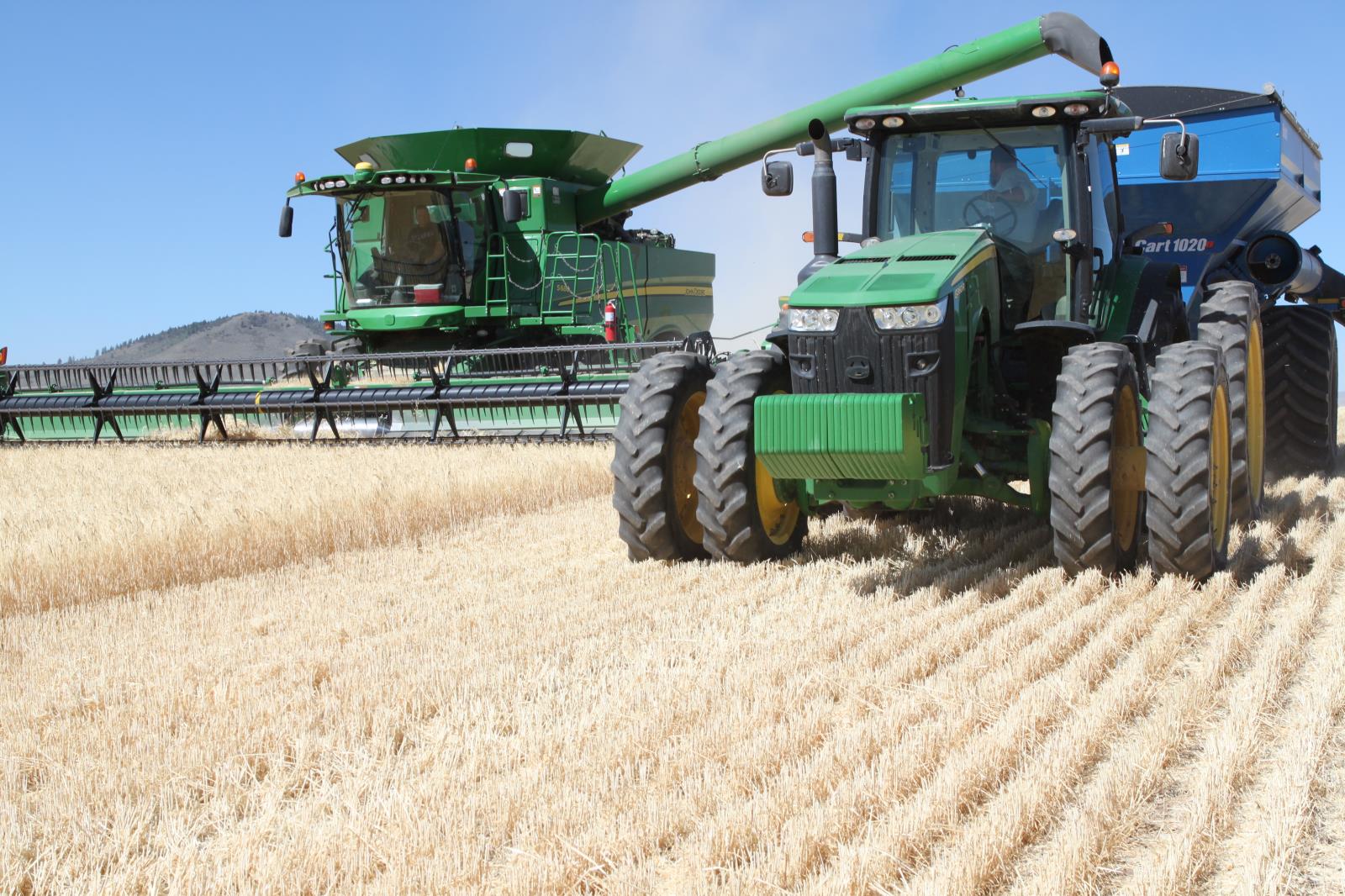Second round of farm relief could help more Idaho farmers

By Sean Ellis
Idaho Farm Bureau Federation
POCATELLO – USDA’s second round of coronavirus farm relief assistance is expected to help more Idaho farmers than the first round.
The U.S. Department of Agriculture’s first Coronavirus Food Assistance Program, which was announced April 17, provided a total of up to $16 billion in direct payments to farmers and ranchers impacted by the reactions to COVID-19.
The application period for the first CFAP program ended Sept. 11.
The USDA on Sept. 17 announced a second round of financial assistance – a total of $14 billion – to producers who have been directly impacted by the coronavirus outbreak.
USDA’s Farm Service Agency is accepting CFAP 2 applications through Dec. 11.
Most classes of wheat and barley grown in Idaho were excluded from eligibility for the CFAP 1 payments.
But now all classes of wheat and barley are eligible to apply for the CFAP 2 assistance.
“We’re very happy with that development,” said Casey Chumrau, executive director of the Idaho Wheat Commission, which along with other wheat organizations made the case to USDA that all wheat growers should be eligible for CFAP payments. “All along we have wanted all of our growers to have the opportunity to receive these payments.”
She said there is no question wheat farmers have suffered as a result of the reaction to the coronavirus outbreak.
“There is no doubt they were impacted and this is a huge win for Idaho and wheat growers across the country, really,” Chumrau said. “Any support our growers can get right now is very welcome.”
Idaho leads the nation in barley production and most of the barley grown here is produced under contract, but contracted barley was not eligible for the first round of CFAP payments. But contracted and other classes of barley are eligible for CFAP 2 assistance.
“We’re very pleased that they updated the program to make it more widely available to more growers, especially those that have risk even though they have contracts,” said Laura Wilder, administrator of the Idaho Barley Commission, which made the case to USDA for including contracted barley in the CFAP program. “Most barley growers will be eligible now.”
Wheat and barley are the No. 2 and 5 crops in Idaho in terms of farm-cash receipts and together Gem State farmers who grow those crops brought in $750 million in farm-cash receipts last year.
“We are thrilled that all classes of wheat and barley are eligible for CFAP 2. That’s wonderful news,” said Stacey Satterlee, executive director of Idaho Grain Producers Association, which represents wheat and barley farmers in Idaho.
She said there is no doubt wheat and barley farmers felt the pinch financially from COVID-19 and a lot of effort went into making the case to USDA.
“A lot of work went into communicating that to USDA and we were really glad to see that wheat and barley are eligible for CFAP 2,” Satterlee said.
Potatoes were initially excluded from the first CFAP program but were later included after a major effort by the Idaho and U.S. potato industry convinced USDA that spud farmers were impacted significantly by the reaction to the coronavirus outbreak.
Potatoes are also eligible under CFAP 2.
That’s good news for Idaho farmers as well as the state’s economy since spuds are a multi-billion-dollar business in Idaho. Idaho potato farmers brought in just over $1 billion in farm-cash receipts last year and when the various potato processing plants are considered, spuds bring in billions of dollars to the state’s economy each year.
If potato farmers received CFAP 1 payments, they are still eligible for CFAP 2 payments and the new program is for contract process growers as well as seed and fresh potato growers.
Idaho dairy farmers and cattle producers, who were also eligible for CFAP 1 payments, are eligible as well for CFAP 2 assistance.
Dairy is the state’s top agricultural sector in terms of farm-cash receipts and beef cattle ranks second. Together, those two commodities brought in $4.6 billion in farm-cash receipts in Idaho last year.
Idaho dairy farmers, who sell about 60 percent of their product through foodservice channels, were initially hammered when the coronavirus outbreak caused most foodservice outlets to close and dairy prices sunk to well below break-even prices as a result, although they have since rebounded.
Idaho Dairymen’s Association Executive Director Rick Naerebout said the CFAP assistance has helped the state’s dairy operations weather the COVID storm.
“It has been a significant help,” he said.
The assistance has also helped the state’s cattle producers, said Cameron Mulrony, executive vice president of the Idaho Cattlemen’s Association.
“I think it has helped for sure,” he said. “Cattle producers were hurt pretty bad when we had that initial big price drop but we’re getting a little bit of help” from the CFAP assistance.
Still can't find what you are looking for? Find by topic:
- County Presidents & Board Information
- County Resource Page
- Delegate Form
- Discount Programs
- Discussion Meet
- Discussion Meet - High School
- Education Programs
- Events
- Excellence Award (YF&R)
- Expense Voucher
- Flickr
- Gem State Producer
- High School Discussion Meet
- High School Speech Contest
- Hope in Idaho Ag
- House of Delegates Credentials Form
- IFBF Board of Directors
- IFBF Staff
- Insurance
- Issue Advisory
- Legislative Action Program
- Legislative Issues
- Library
- MAC Trailer
- Magazines
- Map My Benefits
- Member Benefits
- Member Discount
- Membership Application
- Mental Health Resources
- Mission Statement
- Moving Agriculture to the Classroom
- Newsletter Sign up
- News Releases
- News Room
- Open Range Law
- Photo Contest
Thank You to Our Partners









